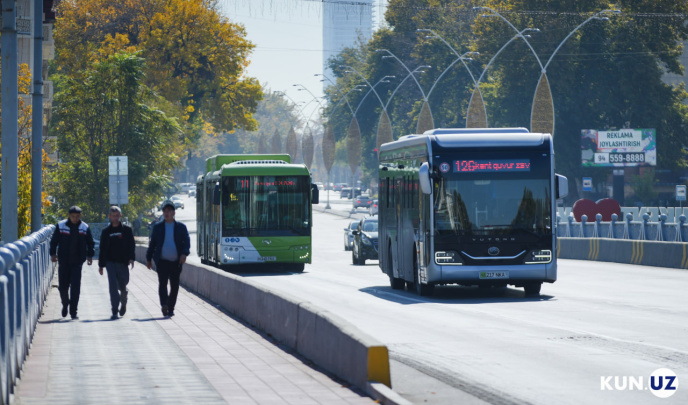According to Javokhir Badalov, a leading researcher at the Institute for Strategic and Interregional Studies, an investment agreement was signed between Uzbekistan and Kyrgyzstan on the eve of the meeting of the heads of state. Earlier, on January 6, in Bishkek, Uzbekistan, Kazakhstan and Kyrgyzstan signed a “roadmap” for the implementation of the project. The construction of a dam with a height of 256 m and a reservoir with a capacity of 5.4 billion cubic meters is envisaged. The HPP is expected to generate 5.6 billion kWh of electricity per year.
The expert believes that a characteristic feature of the HPP is the first of its kind joint mega-project in the recent history of the region with the participation of three countries. The parties are joining forces to use the powerful hydropower potential of Central Asia, which is 930 billion kWh. in year. At the same time, despite the measures taken, to date it has been mastered by only 11%.
Of course, the implementation of the Kambarata HPP-1 is becoming increasingly important against the backdrop of a steady increase in Central Asia's demand for cheap and environmentally friendly energy. This is due to the dynamic growth of the economy and population, the deepening of industrial cooperation in the region. It is expected that by 2030 electricity consumption in Kazakhstan will amount to 136 billion kWh (an increase of 21% compared to 2020), in Uzbekistan - 120.8 billion kWh (an increase of 1.7 times), in Kyrgyzstan – more than 20 billion kWh. (growth by 50%).
In this vein, the planned HPP will ensure the creation of additional generating capacities that can be integrated into a single energy ring of Central Asia. This will increase the reliability of providing the domestic regional market with cheap electricity. Thus, one more step will be taken towards the formation of a common energy market. Moreover, the released energy resources can be supplied to the markets of third countries. It is expected that the commissioning of the Kambarata HPP-1 will make it possible to export energy worth $234 million annually.
Last but not least, the implementation of the project will become an important factor in ensuring food security in Central Asia. Irrigation needs will be met through more efficient management of the water resources of the Naryn River. This is especially true in the summer months, when there is a shortage of water due to high temperatures.
“Moreover, Uzbekistan and Kyrgyzstan have recently been developing agro-industrial cooperation. Today, both countries are taking measures to implement joint projects for the cultivation of fruits and vegetables, the supply of cattle, etc. The implementation of the project will play an important role not only in providing irrigated lands with water, but also in the uninterrupted supply of industrial facilities with electricity,” Javokhir Badalov said.
The construction of hydroelectric power plants, which are a source of cheap and clean energy, is also a requirement of the times. All over the world, control over the environmental friendliness of goods (primarily the presence of a carbon footprint in them) is being strengthened. In particular, the EU plans to introduce a tax on goods produced with a high level of carbon dioxide emissions in 2026. In this regard, the generation of electricity at hydroelectric power stations will give Uzbekistan and Kyrgyzstan the opportunity to bring competitive products made from clean energy to the markets.
The investment agreement on the construction of the Kambarata HPP-1 is also a logical continuation of the high dynamics of cooperation between Uzbekistan and Kyrgyzstan in the water and energy sector.
Despite the issues that have taken place, Tashkent and Bishkek have developed mutually acceptable mechanisms for cooperation in this area. A seasonal energy exchange was established between the countries, according to which Uzbekistan supplies electricity to a neighboring country in spring and autumn, while Kyrgyzstan returns it in summer. As a result, agriculture in Uzbekistan receives the necessary amount of water, and Kyrgyzstan – the possibility of accumulating water for its use at the right time.
In order to more effectively coordinate these and other processes, a joint water commission began its work in August 2022. It is noteworthy that already at its first meeting, an interdepartmental Agreement on cooperation on water management issues was signed.
Moreover, the country is actively involved in the supply and transit of electricity to Kyrgyzstan. Thus, Uzbekistan not only supplies electricity to Kyrgyzstan, but also through its energy networks ensures the transit of electricity from Turkmenistan, the volume of which in 2021-2022 exceeded 1 billion kWh.
The Institute employee emphasized that the trilateral project for the construction of the Kambarata HPP-1 is evidence of a new regional dynamic. Earlier, Uzbekistan and Tajikistan began construction of two hydroelectric power stations on the Zarafshan River. All this shows that mutually beneficial cooperation in the water and energy sector in Central Asia can serve as a unifying factor.
“The parties demonstrate the ability to constructively resolve even the most complex issues by finding mutually acceptable compromises. Such cooperation can become an exemplary model for other regions experiencing similar problems. In general, the agreements reached following Shavkat Mirziyoyev's state visit to Kyrgyzstan are unprecedented. They will certainly open a new page in relations between the two fraternal countries and peoples, contribute to ensuring security, stability and sustainable development throughout the Central Asian region,” the expert concluded.






